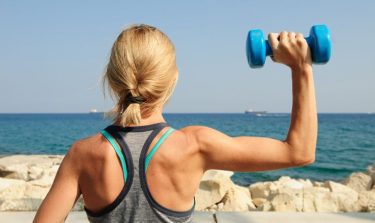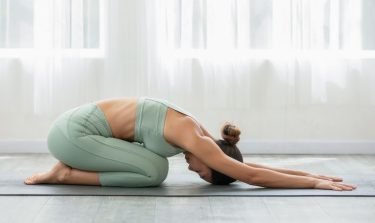How Exercise Can Help You Deal with Breast Cancer
By Dr. Nikita Toshi +2 more

Get,

to manage your symptom
Get your,


4 Cr+ families
benefitted

OTP sent to 9988776655



You’ve successfully subscribed to receive
doctor-approved tips on
Whatsapp

Get ready to feel your best.

Hi There,
Download the PharmEasy App now!!


Register to Avail the Offer
Send OTPBy continuing, you agree with our Privacy Policy and Terms and Conditions

Hi There,
Sign up on PharmEasy now!!
Trusted by 4 crore+ families

OTP sent to 9988776655



You have unlocked 25% off on medicines




Code: NU25
By Dr. Nikita Toshi +2 more
Table of Contents
Breast cancer is a condition in which the cells in the breast proliferate out of control. Breast cancer comes in several forms and based on which breast cells develop into cancer, the type of breast cancer is determined1.
It is crucial to realise that the majority of breast lumps are referred to technically as a tumour but may be benign and not cancerous (malignant). Some benign breast lumps can increase a woman’s risk of breast cancer, even if the majority of them are not life-threatening. Any breast lump or change in the breast should be examined by a medical professional to determine whether it is benign or malignant (cancer) and whether it may increase your risk of developing cancer in the future.

Different areas of the breast may be affected by breast cancer. Connective tissue, ducts and lobules are the three fundamental parts of a breast. The glands that generate milk are called lobules. In order to reach the nipple, milk passes through ducts. Everything is wrapped in and held in place by connective tissue, which is composed of fibrous and fatty tissue. Most breast cancers begin in the lobules or ducts.
Breast cancer can spread outside the breast via lymphatic and blood arteries. Breast cancer is said to have metastasised when it spreads to other areas of the body.
There are several parts to the breast where cancer can start:
Occasionally, breast cancers develop in tissues other than the breast. Sarcomas and lymphomas are the names of these cancers, which are not typically thought of as breast cancers.
You must be aware of how your breasts typically feel and look. Mammograms do not always detect breast cancer, despite the importance of routine screening tests for the disease. This implies that it’s crucial for you to check your breasts routinely and look out for any changes.
The most typical sign of breast cancer is a new tumour or lump (although most breast lumps are not cancerous). Breast tumours can sometimes be soft, spherical, tender or even painful and some are painless, like a hard mass with irregular borders.
The following are some of the signs of breast cancer:
There are numerous benign (non-cancerous) breast disorders that can also cause these symptoms. Nevertheless, it’s crucial to get any new breast tumour, lump or alteration examined by a skilled medical practitioner so the cause can be identified and treated, if necessary.
Keep in mind that regular breast cancer screenings are crucial. Breast cancer can be detected early, before any symptoms are noticed, through mammography. You have a better chance of receiving effective treatment if breast cancer is detected early.
One of the most crucial things you can do to maintain your health after receiving a breast cancer diagnosis is exercise. Exercise or any other home remedies cannot help in eliminating any cancer. However, according to research, women who exercise have a higher quality of life and experience fewer side effects both during and after treatment. Additionally, studies have shown that exercise improves mood, stamina and general health and fitness. These factors are crucial for the health of the mind and body, especially when a person is dealing with something as stressful as undergoing cancer treatment.
Breast cancer may limit your ability to move your shoulder and arm or carry out daily tasks like getting dressed, taking a shower and combing your hair. Your arm and shoulder’s range of motion may be restricted by pain and stiffness5.
That is why it’s critical to perform exercises to regain movement in your arm and shoulder. Along with that, you will need to focus on exercises for overall fitness. Exercises must also be done in the post-surgery recovery stage to aid in reducing post-surgery side effects and speed up your return to regular activities.
Exercises are especially more crucial if you have radiation therapy following surgery to maintain your arm and shoulder flexible. Your arm and shoulder may still be affected by radiation even after your therapy is over. As a result, it’s critical to establish a regular exercise routine to preserve arm and shoulder mobility following breast cancer radiation treatments.

Also known as cardio, this is a sort of exercise that increases your heart rate and may make you sweat. Exercises like walking, running, rowing, riding a bike or swimming are all very effective cardio exercises. It is advised that patients diagnosed with breast cancer do cardio for at least 30 minutes five days a week (or 150 minutes total). This type of physical activity enhances heart health and aids in maintaining a healthy weight. Many people also find it helpful for stress management and preserving feelings of positivity.
Cardiovascular exercises increase blood flow to all parts of the body, help with better oxygen retention, keep the joints smooth and aid in digestion. They improve sleep quality, which in turn helps with stress management.
Studies3 can show that breast cancer survivors and those carrying the gene for the same benefit from staying active. Other studies4 have found that the chances of recurrence of cancer are lower among people who exercise regularly.

As explained, breast cancer may limit shoulder movement. The trick is not to go overboard and strain your shoulders. People new to shoulder exercises can try shoulder rotation, plank, shoulder stretch, wall pushups and lifting dumbbells that are not heavier than 1 kg each.
People who work out in gyms can try dumbbell shoulder presses, arm circles and one-arm dumbbell rows. Talk to your doctor before you hit the gym after your diagnosis or surgery.

The arms, too, must be exercised so that your daily activities can continue uninterrupted. Simple home exercises that can free up your arm are- tricep dips, wall pushups, bicep curls with gentle weights and plank.

Yoga is a great way to stretch sore and aching muscles without causing further injury. Some ‘asanas’ or postures are particularly beneficial for the chest, shoulder and arm muscles- dhanurasana, marjaryasana, uttana shishosana and garudasana.
For control, stress and anxiety, balasana, sukhasana and viparita Karani will come to your assistance.
Some exercises are best avoided when you are ill or recovering. Your body is vulnerable and the best way forward is to strengthen it with limited doses of exercise.
It is imperative that you avoid-
Also Read: Best Exercises for Fatty Liver You Should Try
The start of treatment is not the right moment to start a rigorous fitness regimen. You’ll probably have days when you feel energised and days when you feel more worn out.
Also Read: 7 Best Exercises to Lose Weight at Home
Breast cancer requires immediate and categorical treatment. The treatment and, in fact, the diagnosis of cancer can be stressful for the mind and body of the patient. That is why doctors recommend regular exercise to help your body cope with and respond to treatment. Exercise also speeds up recovery post-surgery. Start exercising when your doctor advises.
Also Read: Penile Cancer: Symptoms, Diagnosis & Treatment
Ans: It is difficult to say for sure if exercise lowers cancer chances. But some studies have found that since exercise regulates the secretion of oestrogen and insulin, it may be beneficial against the development of cancer cells in the breasts.
Ans: Exercise is a simple and extremely efficient way to manage pain, improve mobility and control stress. Exercise may not directly cure you, but it will help by keeping your mind and body fit.
Ans: While exercise does not cure cancer, some exercises will help with symptom management and relieve stress. Arm and shoulder exercises like planks, wall pushups, shoulder rotation and yoga will help. Regular cardio activities like power walking, swimming and cycling are recommended based on the patient’s health.
Disclaimer: The information provided here is for educational/awareness purposes only and is not intended to be a substitute for medical treatment by a healthcare professional and should not be relied upon to diagnose or treat any medical condition. The reader should consult a registered medical practitioner to determine the appropriateness of the information and before consuming any medication. PharmEasy does not provide any guarantee or warranty (express or implied) regarding the accuracy, adequacy, completeness, legality, reliability or usefulness of the information; and disclaims any liability arising thereof.
Comments

Leave your comment...
You may also like
Comments